Combat aircraft. Such an intriguing start
So, today's hero is "Douglas" DB-7 "Boston".
Historically, this aircraft was considered a front-line bomber in our country and was mainly used in this role. However, "Boston" could easily be used as a torpedo bomber, night fighter and attack aircraft.
Actually, the plane was originally created as a heavy attack aircraft. Someone Jack Northrop, the owner of the Northrop Corporation, was doing this. It was Northrop who came up with the idea of a twin-engined aircraft.
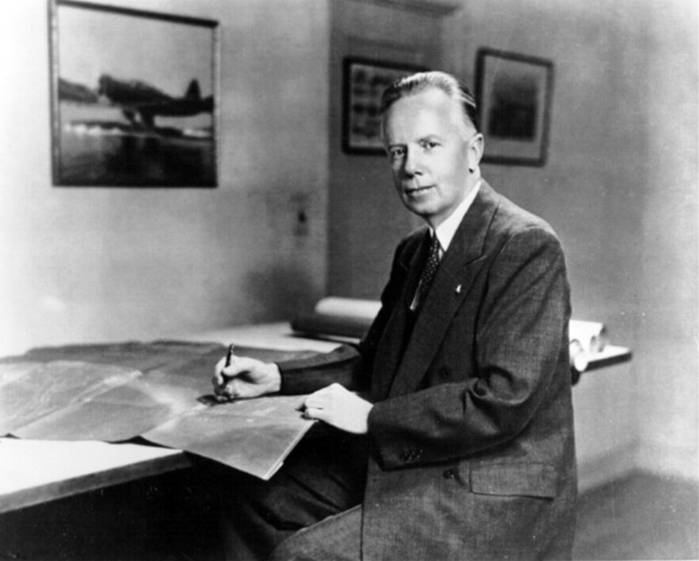
The project called "Model 7" was created by Jack Northrop himself in terms of personal initiative. The lead engineer was Ed Heineman, who would later play his rather big role in the fate of the aircraft.
The aircraft was innovative. A very elegant all-metal monoplane of the classic twin-engine design. Smooth skin, closed cockpits, automatic propellers, controlled upper turret, which had two positions, flight and combat. In flight, the turret was retracted inside the fuselage.
The top of the strangeness at that time was the chassis. Yes, in 1936, many aircraft models had retractable landing gears, but not all of them did this using hydraulics. In addition, the landing gear was not with the usual tail wheel, but with a retractable bow strut.
Two engines "Pratt-Whitney" R-985 "Wasp Junior" with a capacity of 425 hp. and good aerodynamics promised decent performance characteristics. The design maximum speed at a normal flight weight of 4 310 kg was to exceed 400 km / h.
The armament of the new attack aircraft corresponded to the ideas of the 30s. That is, the main "clients" were considered infantry, cavalry, artillery and transport. Therefore, it was planned to hit them with machine-gun fire and small fragmentation bombs. Reservation of the stormtrooper was considered overkill.
The DB-7 was also distinguished from the attack aircraft of that time by the fact that the entire bomb load was located in the bomb bay inside the fuselage. This was very productive as it again improved the aerodynamics of the aircraft. In the world, they mainly used external suspension under the wings, the same Soviet P-5Sh and Italian "Caproni" Ca.307.
The Americans, on the other hand, did not consider the option of hanging large bombs at all. The country's defensive (and it was just that) doctrine somehow did not provide for battles at all, since the United States had only two neighbors, Mexico and Canada, and it was not particularly planned to fight either with the former or with the latter. The war with Canada did not seem to be a real thing at all, and Mexico in any case did not look like a strong adversary due to the difference in technological development.
At one time in the American army of the 30-ies of the last century, the question of the advisability of having in it tanks.
Small arms were, but for an attack aircraft, let's face it, it was not rich. One 7,62mm machine gun firing forward and two defensive machine guns of the same caliber firing backward. One was in the upper retractable turret, the second was in the hatch in the aft fuselage for firing down and back. In the flight position, the retractable tower protruded upward by no more than a third of its height.
The crew consisted of two people.
Almost in parallel, we developed a scout project. It did not have a bomb bay; in its place was an observer's cabin with photographic equipment. The cab floor was made transparent and provided simply excellent visibility down and to the sides.
In 1937, when work on the aircraft was in full swing, the command of the US Air Corps, as the Army military was then called aviation USA, decided on the parameters of the attack aircraft it needed.
It was to be an aircraft that could fly at speeds in excess of 320 km / h for a range of over 1900 km with a bomb load of 1200 lb / 544 kg.
Northrop's plane was quite consistent in terms of speed, but the range and bomb load were small.
Northrop had by that time quit and founded a new company, in which he worked very successfully for many years. Instead, Ed Heineman took over the company and assembled a new team to finalize the Model 7.
And the work began. To begin with, the motors were replaced with stronger R-1830-S3C3-G, with a capacity of 1100 hp. Then they doubled the supply of fuel in the tanks. The bomb load was also doubled, to 908 kg, and a very wide range of ammunition was provided, from one 900 kg bomb to 80 bombs weighing 7,7 kg.
The model of the scout was immediately abandoned, but two models of the attack aircraft were developed, with different options for the bow.
In the first, the bow was made glazed, the navigator was located there (the crew in this case consisted of three people) and four 7,62-mm machine guns in pairs in the side fairings. A panel was made in the glazing for installing a bomb sight.
The second option provided for a crew of two, and in the bow, instead of the navigator, there was a battery of six 7,62-mm machine guns and two 12,7-mm machine guns.
The sections could be easily replaced, the docking connector went along the frame in front of the cockpit canopy.
Defensive armament consisted of two 7,62 mm machine guns; they were located in the retractable upper and lower turrets.
This variant was dubbed the Model 7B and was presented to a War Department committee along with four competitors Bell 9, Martin 167F, Steerman X-100 and North American NA-40.
On October 26, 1938, the first prototype of the Model 7B took off.
During factory tests, the aircraft flew with both nose options. The aircraft showed a speed of more than 480 km / h that was simply excellent for that time, excellent maneuverability for a twin-engine aircraft and very easy and unpleasant piloting.
However, the military department still could not decide which aircraft to purchase. As time went on, the prospects remained dim.
Suddenly, the French became interested in the attack aircraft, who were planning another war in the Germans. The French had enough of their own models, moreover, they had just excellent planes, but clearly did not have enough production capacity to quickly saturate aviation with a sufficient number of planes.
And the French began to explore the possibility of purchasing aircraft from the United States. This was quite logical, because Britain was preparing for the same cut on the one hand, and it was unrealistic to buy something in Germany or Italy. So the United States remained the only partner in this regard.
By the way, the British were doing almost the same thing, studying the American market for the purchase of aircraft.
On January 23, 1939, a not very pleasant event happened. Test pilot Cable took off on a demonstration flight with a passenger - French Air Force captain Maurice Shemidlin. The flight proceeded normally, Cable did various aerobatics, but at one point the right engine stalled, the car fell into a tailspin and began to randomly fall from a rather low altitude of 400 meters.
Cable tried to save the car, but eventually abandoned it at an altitude of 100 meters. The parachute did not have time to open, and the pilot crashed.
But the Frenchman could not get out of the plane and fell with him.
It turned out that this is what saved his life. Shemedlin was found in the wreckage and on a broken keel, as on a stretcher, was taken to an ambulance.
Strange, but this disaster did not stop the French from ordering 100 aircraft. True, they saw the DB-7 not as an attack aircraft, but as a bomber. So, in the opinion of the French side, it was necessary to increase the range, bomb load, and provide for armor protection. Instruments, radio station and machine guns were supposed to be of French models.
The fuselage became narrower and higher, the retractable turret from above disappeared - it was replaced by the usual pivot installation, which in flight position is covered by a lantern. The volume of gas tanks has increased, the size of the bomb bay has also increased. The bomb load was now 800 kg. For the bow, a glazed version was adopted with a navigator's cabin and four fixed machine guns. Two more machine guns defended the rear hemisphere. The machine guns were 1934 mm MAC 7,5. The instruments were also replaced with French metric instruments.
The crew consisted of three people: a pilot, a navigator-bombardier (according to French standards, he was the commander of the plane) and a gunner-radio operator.
An interesting feature was the installation of redundant control and some instruments in the cockpit of the radio operator. As conceived, the shooter could replace the pilot in the event of his failure. The disadvantage of the fuselage design was that in flight, the crew members could not change places if they wanted to.
But there was no logic in giving the shooter the ability to control the plane, there was no logic at all, since he sat with his back to the direction of flight and did not see anything. It would have been smarter to give the navigator the opportunity to control the aircraft, but it turned out to be easier to completely abandon redundant control.
The revision of the Model 7B took only six months. On August 17, 1939, the modernized aircraft, dubbed the DB-7 (Douglas Bomber), took to the skies for the first time. And in October, the French military accepted the first production aircraft from the ordered hundred. When it came to fulfilling contracts, the Americans were also capable of a lot.
The delighted French rushed to order a second batch of 170 vehicles.
In October 1939, when the Second World War had already set fire to Europe, the French ordered another 100 aircraft. These should be aircraft of the DB-7A modification with Wright R-2600-A5B 1600 hp engines, which promised a serious increase in all flight characteristics.
The armament of the new modification was reinforced with two stationary machine guns installed in the tail sections of the engine nacelles. I fired from the bottom of the shooters, and machine guns were fired so that the tracks intersected at some point behind the tail of the aircraft. The idea was to shoot through the dead zone of the tail machine guns behind the empennage.
In total, the French managed to receive 100 aircraft from the first batch and 75 from the second. Not a single aircraft of the new modification DB-7V3 (triple) was delivered to France, although the contract was signed. They just did not have time, France surrendered.
In the Soviet Union, where they closely watched the success of the American aircraft industry, they also wanted to purchase a new aircraft. He interested the chief of the Red Army Air Force, commander Loktionov, with his set of weapons and speed characteristics, which were superior to the newest Soviet bomber SB.
They had to use the well-known company "Amtorg", which performed the functions of the shadow trade representation of the USSR in the United States. Following the first round of negotiations, Douglas agreed to sell 10 aircraft, but in a non-military version, without weapons and military equipment. Our military insisted on ten planes with weapons, plus they wanted to acquire a production license.
On September 29, 1939, Soviet representative Lukashev reported from New York that Douglas had agreed to sell the aircraft in full version, as well as provide a license and provide technical assistance in organizing the production of DB-7s in the Soviet Union.
In parallel with Wright, negotiations were under way for a license for the R-2600 engine. The terms of the treaty had already been agreed, and the adoption of an American aircraft in the Soviet Air Force was a very real thing.
Alas. The war with Finland prevented.
Immediately after the Soviet Union went to war with its neighbor, President Roosevelt declared a "moral embargo" on supplies to the USSR. And this moral embargo has become completely normal. Roosevelt was highly respected in the United States, and therefore American companies began to break the agreements already concluded with our country. We stopped supplying machines, tools, devices. There was no need to even stutter about assistance in the development of purely military products.
The Americans did not regret it. World War II began, and with it began orders for equipment.
But in the USSR, the DB-7 was not forgotten. Despite such a non-optimistic ending.
Meanwhile, the "strange war" was over, the defeated British corps fled across the English Channel, France, Poland, Belgium, Denmark, Holland ceased resistance.
The United States continued to deliver aircraft paid for by France to Casablanca. About 70 of the ordered planes arrived there. They were manned by several squadrons that took part in the hostilities.
But the first use of the DB-7 occurred on May 31, 1940 in the Saint-Quentin area. 12 DB-7B made its first combat mission against German forces deploying to Peronne. The raid was unsuccessful, since the French were met by anti-aircraft fire and German fighters. Three attack aircraft were shot down, but the French also shot down one Bf 3.
Until June 14, the French lost 8 aircraft in sorties. Mostly from anti-aircraft gunners. DB-7s flashed very well, the lack of protected tanks affected. French representatives demanded to install sealed gas tanks and the Americans began to install them. True, these planes did not make it to France.
The bulk of the French Air Force DB-7 flew to Africa. At the time of the surrender of France, not a single operational DB-7 remained there.
There were 95 planes in the African colonies. They were used in the September 1940 raid on Gibraltar, in response to British air attacks on French bases in Algeria. The raid was ineffective. One DB-7 was shot down by a British Hurricane.
And those planes that were paid for, but not delivered, after the surrender of France, were inherited by the British.
By order of the British, the Americans converted the DB-7B to British requirements. The fuel system and hydraulic system were redesigned, armor and sealed tanks appeared, and the amount of fuel was doubled (from 776 to 1491 liters). The armament consisted of the usual 7,69-mm machine guns from "Vickers". The radio operator was generally installed with a Vickers K with disk power.
The British War Department has signed a contract for 300 vehicles. At the same time, the name DB-7 "Boston" appeared in the documents.
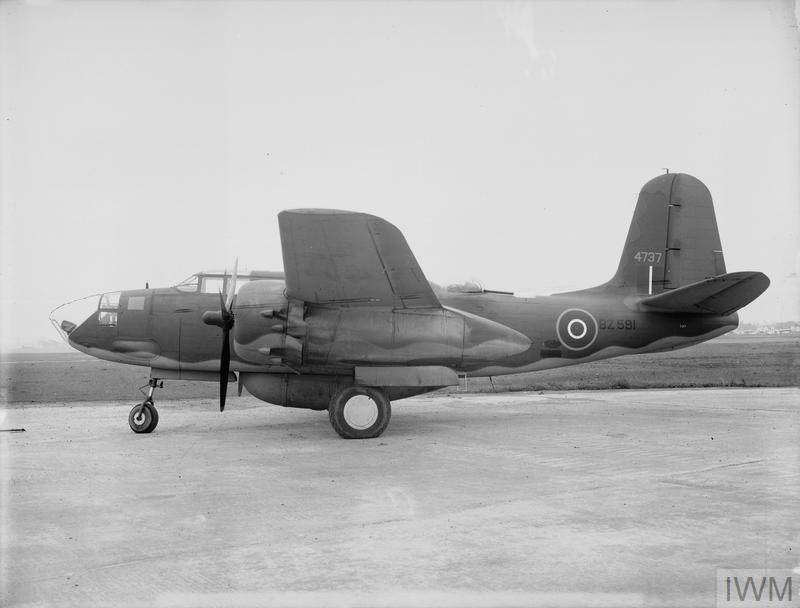
But besides the ordered planes, planes ordered by France began to arrive in Britain. Ships with planes turned around and went to the ports of Great Britain. In total, about 200 DB-7, 99 DB-7A and 480 DB-7B3 were forwarded. To these were added 16 DB-7s ordered by Belgium. In general, on the one hand, the British received many good aircraft at their disposal, on the other, it was a very diverse company.
The Belgian vehicles, which were unarmed, were decided to be used as training vehicles. It was on them that British pilots underwent retraining.
Naturally, I had to get used to some of the nuances. For example, in order to give gas, the sector handle on French and Belgian aircraft had to be moved towards oneself. And on American and British planes - on my own. Plus I had to change the instruments that were in the metric scale.
But with surprise, the British found out that the DB-7 was distinguished by excellent handling and visibility, and the three-wheeled chassis greatly simplifies takeoff and landing.
These planes were named "Boston I".
Aircraft from the French order with R-1830-S3C4-G engines were named "Boston II". They also did not want to use them as bombers, they did not like the flight range. They decided to convert these aircraft into night fighters.
And only "Boston III", which went in 1941, series DB-7В and DB-7В3 of the French order, began to be used as bombers. A total of 568 aircraft of the third series were delivered to Great Britain.
The first combat sortie aboard the Bostons was made by the 88th squadron in February 1942. In the same month, its planes were attracted to the search for the German battleships Scharnhorst and Gneisenau and the heavy cruiser Prince Eugen, which were breaking through the English Channel from the French Brest.
One of the crews discovered the ships and dropped their entire bomb supply on them. Didn't reach hits, but as they say, a start was made.
"Bostons" began to attract for strikes against industrial enterprises in Germany. Until 1943, Bostons repeatedly bombed industrial enterprises in France (Matfor) and Holland (Philipps). The Bostons were good at approaching at low altitude and attacking unexpectedly. In order to be able to do this, they began to use bombs with delayed action fuses.
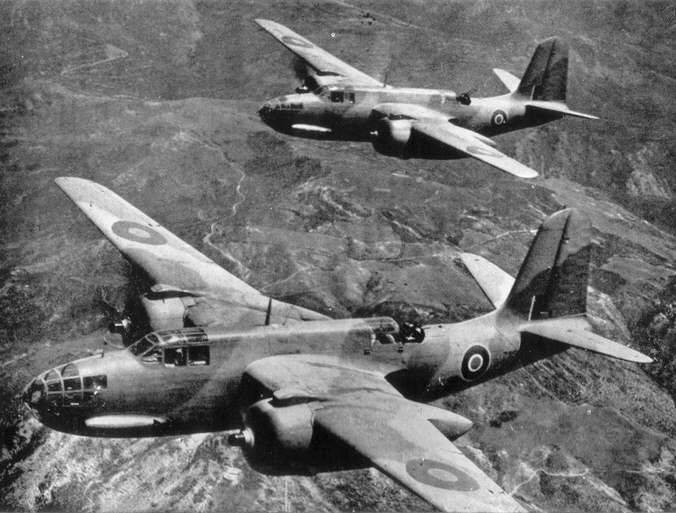
A few words should be said about the alterations that began to be performed already in Britain.
Prior to the advent of the Beaufighter and Mosquito fighters, it was decided to re-equip the Bostons for use as night fighters.
The AI Mk.IV radar was normally located in the bomb bay, a battery of eight 7,69-mm machine guns from the Browning was placed in the bow, the defensive armament was removed, the crew was reduced to 2 people, while the rear gunner began to serve the onboard radar.
The modification was named "Havok". "Bostons I" were designated "Havok Mk I", and "Bostons II" - "Havok Mk II".
The aircraft were painted matte black. Thus, 181 aircraft from the first series were converted.
Boston IIIs were also being converted into night fighters, but not so actively. The composition of the armament was different: instead of machine guns in the nose, a container with four 20-mm Hispano cannons was suspended under the fuselage.
Night fighters based on Boston were used until 1944, when they were replaced everywhere by the Mosquito.
In terms of equipment, the Boston was a very sophisticated aircraft. Each crew member had an oxygen device with a 6 liter cylinder. That is, there was enough oxygen for 3 - 3,5 hours of flight.
Naturally, the crew could communicate with each other using an intercom, but just in case, a cable device was stretched between the pilot and the shooter, with which it was possible to transfer notes. In addition, each crew member also had colored warning lights. With the help of it, it was also possible to transmit information by lighting certain combinations of light bulbs.
The cockpit was not sealed, but was heated by steam heating. The heater was located in the gargrotto; ducts for the supply of hot air went into the cabin from it.
Each plane had a first-aid kit (at the navigator), a manual fire extinguisher (at the gunner) and two packages with an emergency supply of food - above the pilot's seat and on the right in the navigator's cockpit.
And in the end it is worth mentioning one more modification of the "Boston".
After the occupation of Holland, the government moved to London and from there ruled over the colonies, of which the country had a lot. The largest was the Dutch East Indies, now Indonesia. The colony was quite independent, but it was necessary to protect it from the Japanese together.
And 48 DB-7C units were ordered for the East Indies. These aircraft were supposed to fly mainly over the sea, and ships were considered targets. That is, they needed a universal aircraft with a long flight range, which could be used as a bomber, and as an attack aircraft, and as a torpedo bomber.
The Americans were able to place a Mk.XIl torpedo in the bomb bay. True, it protruded slightly outward, so the bomb bay doors had to be removed.
The aircraft also includes emergency equipment with a rescue boat.
Plus, the Dutch asked to make, among other things, options with a crew of three, with a glazed navigator's cockpit, and a normal attack aircraft with a bow, in which it was necessary to install four 20-mm Hispano cannons.
The first aircraft were ready at the end of 1941. Before the outbreak of the war in the Pacific, the Dutch did not manage to receive and assemble a single torpedo bomber. The first torpedo bombers hit after the Japanese captured the island of Java.
The Dutch managed to assemble only one plane, which seems to have made several sorties. All other aircraft went to the Japanese in varying degrees of readiness.
But those planes that were contracted by the Dutch, but did not get to the Pacific Ocean, ended up in the Soviet Union.
But more on that in the next article about "Douglas".
LTH DB-7B
Wingspan, m: 18,69
Length, m: 14,42
Height, m: 4,83
Wing area, м2: 43,20
Weight, kg
- empty aircraft: 7 050
- normal takeoff: 7 560
- normal takeoff: 9 507
Engine: 2 x Wright R-2600-A5B Double Cyclone x 1600 hp
Maximum speed km / h: 530
Cruising speed, km / h: 443
Practical range, km: 1 200
Speed, m / min: 738
Practical ceiling, m: 8 800
Crew, prs: 3
Armament:
- 4 course 7,69 mm machine guns;
- 4 defensive 7,69 mm machine guns;
- up to 900 kg of bombs
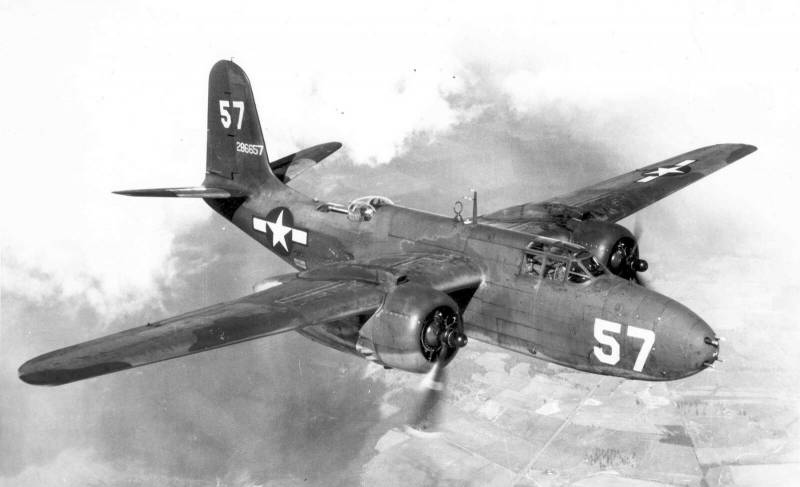
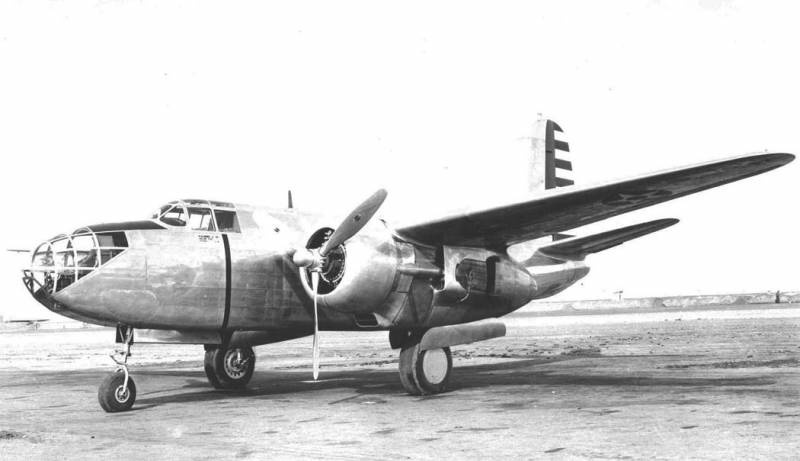
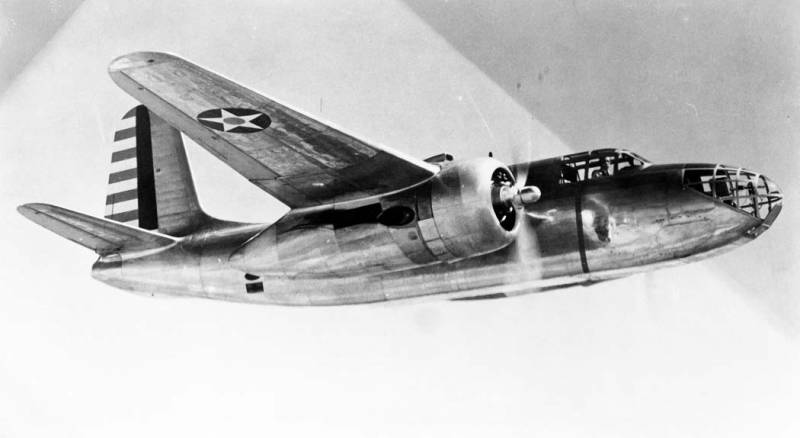
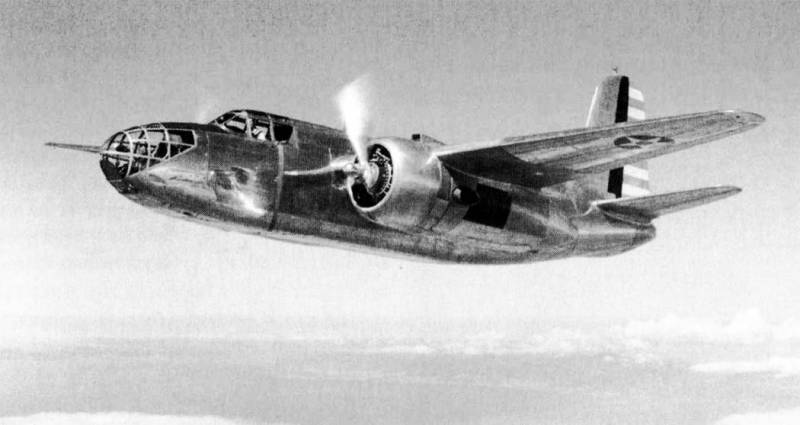
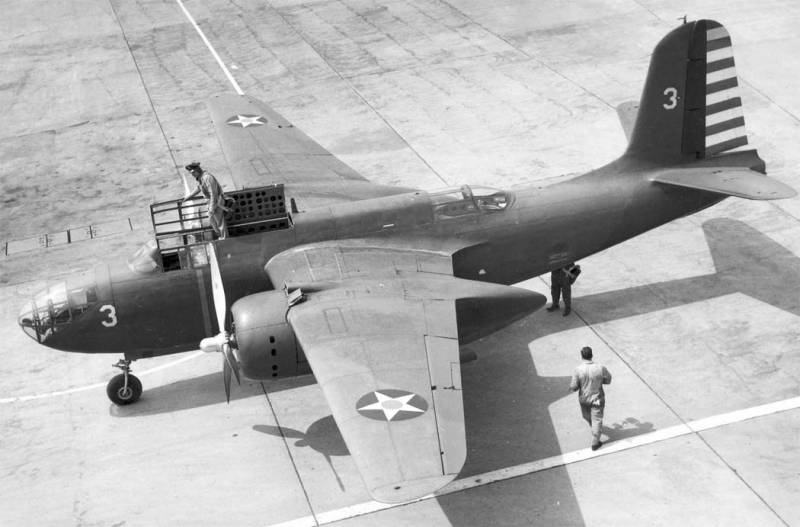
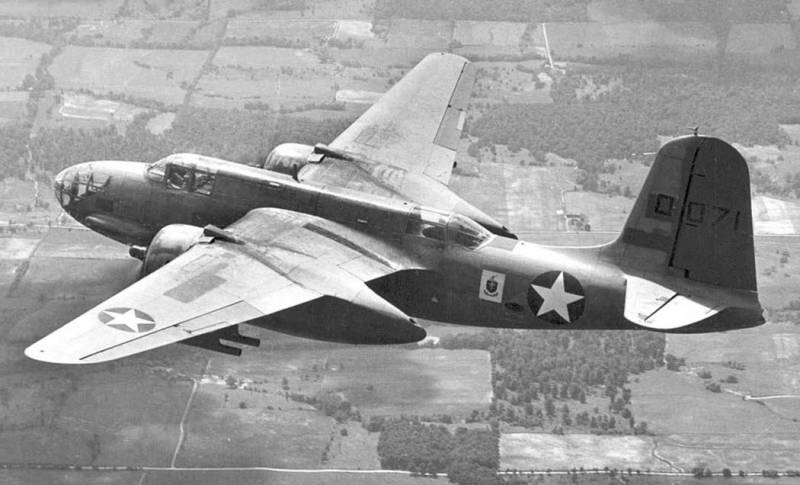

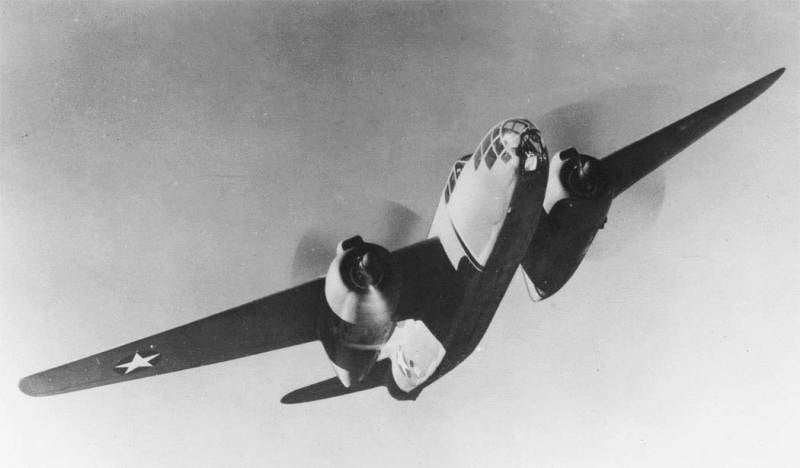
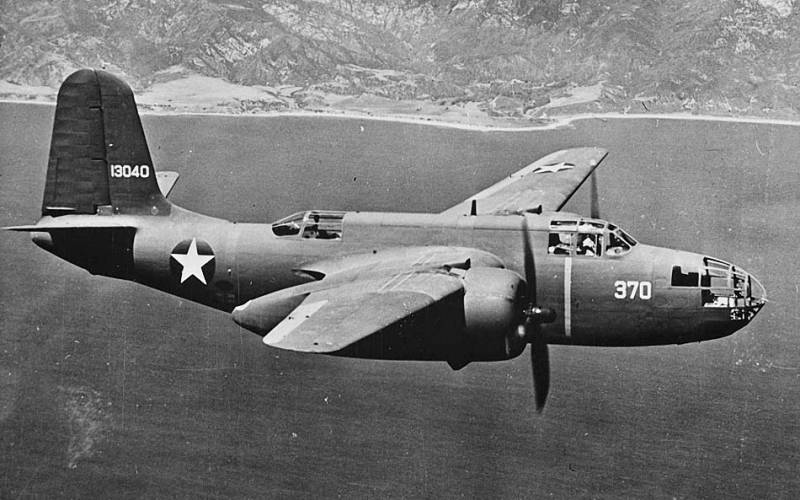
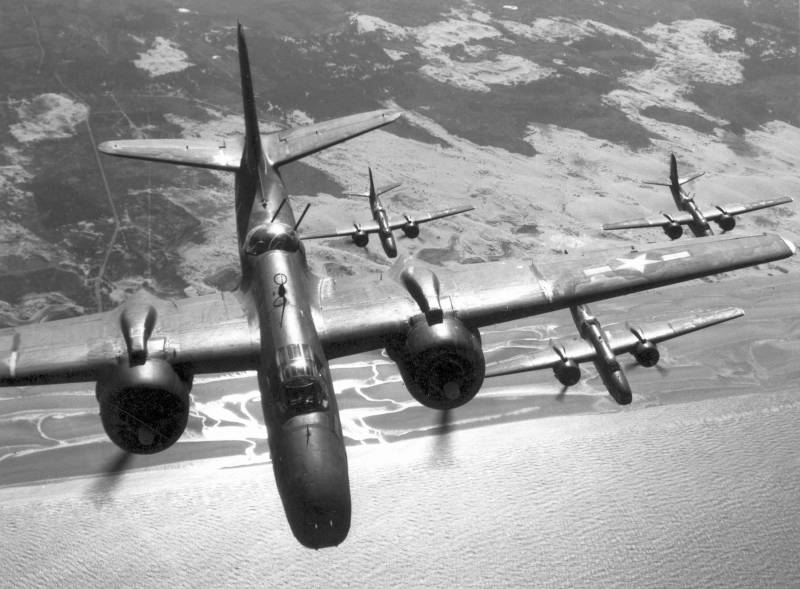
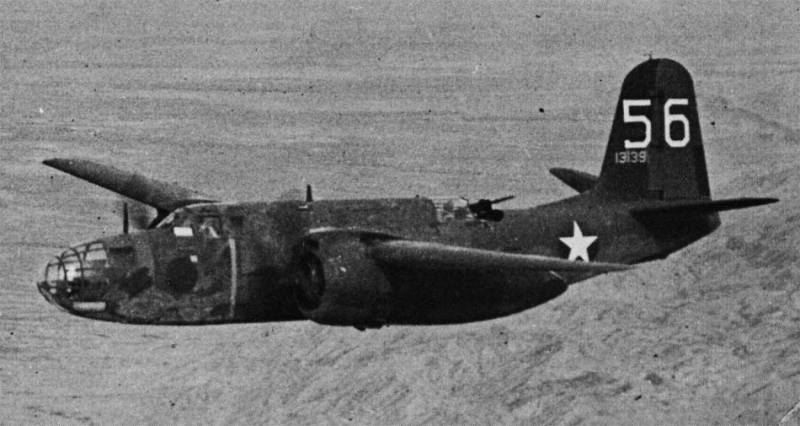
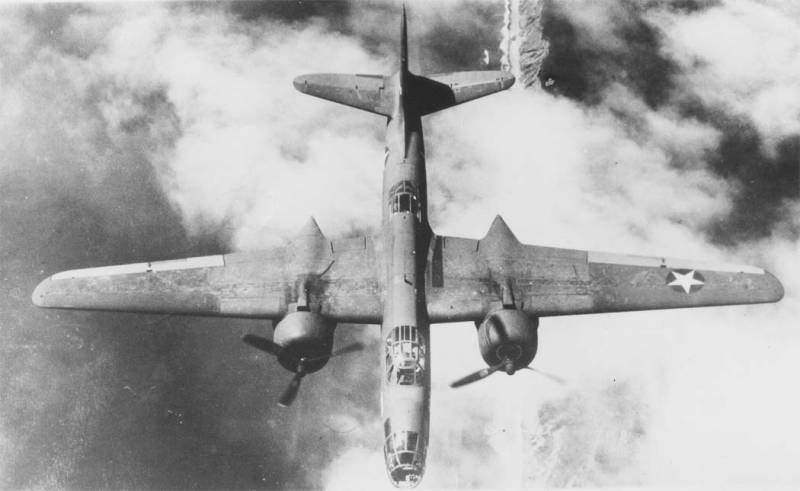
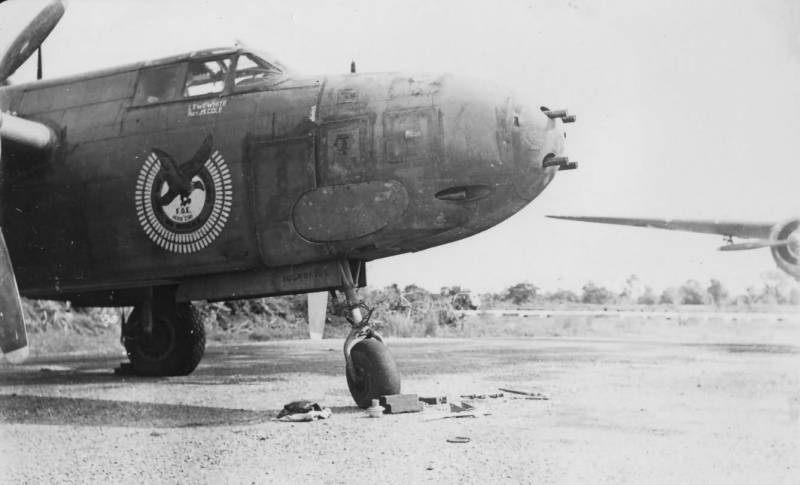
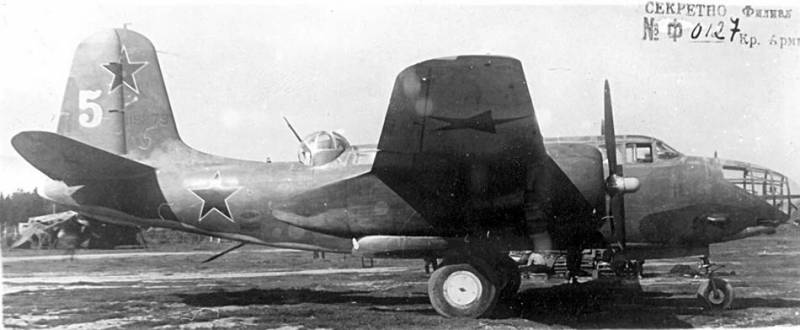
Information